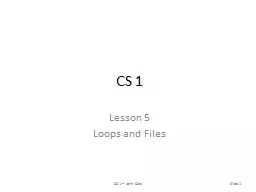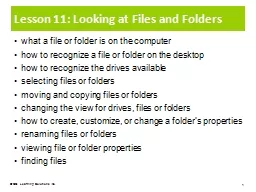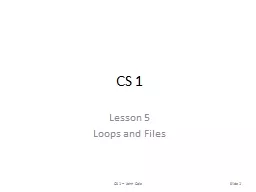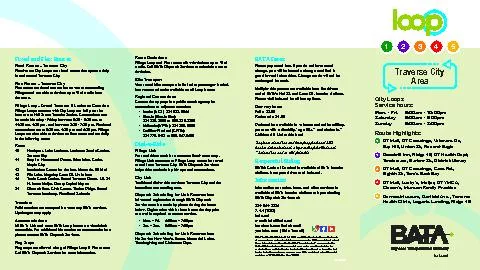PPT-CS 1 Lesson 5 Loops and Files
Author : trish-goza | Published Date : 2018-02-02
CS 1 John Cole Slide 1 Increment and Decrement Operators is the increment operator It adds one to a variable val is the same as val val 1 can be used before
Presentation Embed Code
Download Presentation
Download Presentation The PPT/PDF document "CS 1 Lesson 5 Loops and Files" is the property of its rightful owner. Permission is granted to download and print the materials on this website for personal, non-commercial use only, and to display it on your personal computer provided you do not modify the materials and that you retain all copyright notices contained in the materials. By downloading content from our website, you accept the terms of this agreement.
CS 1 Lesson 5 Loops and Files: Transcript
Download Rules Of Document
"CS 1 Lesson 5 Loops and Files"The content belongs to its owner. You may download and print it for personal use, without modification, and keep all copyright notices. By downloading, you agree to these terms.
Related Documents














